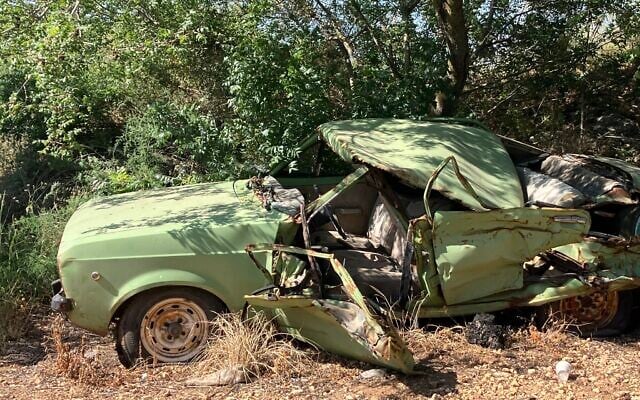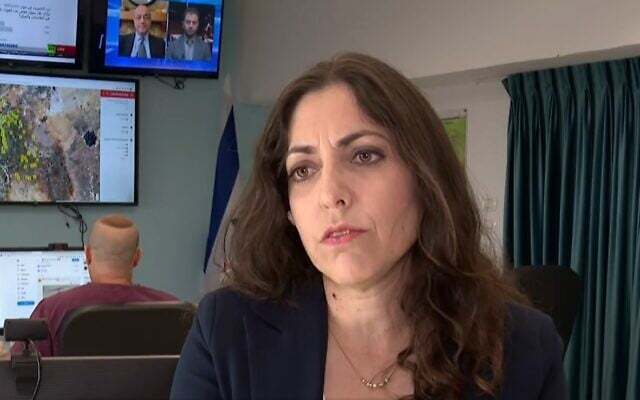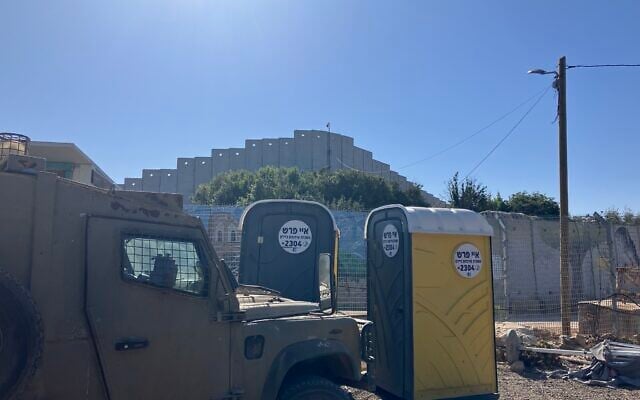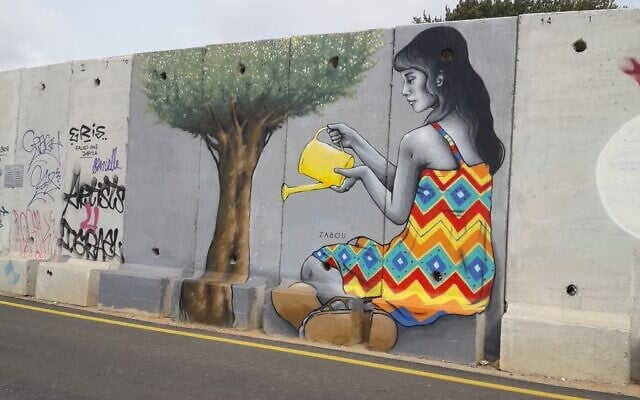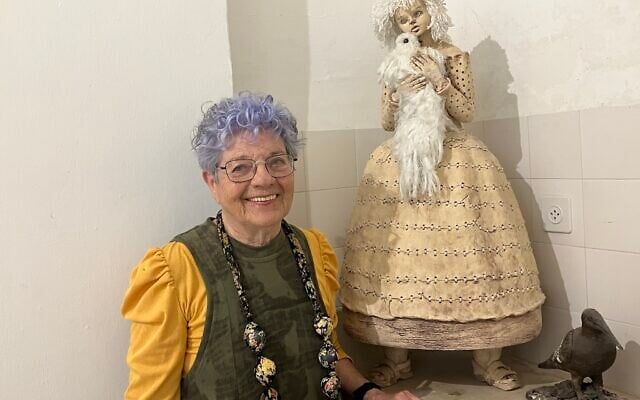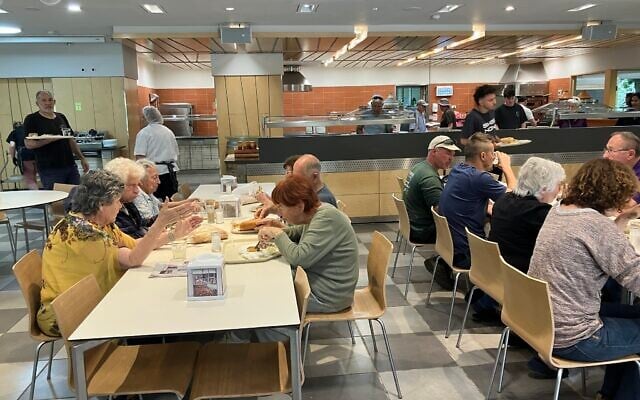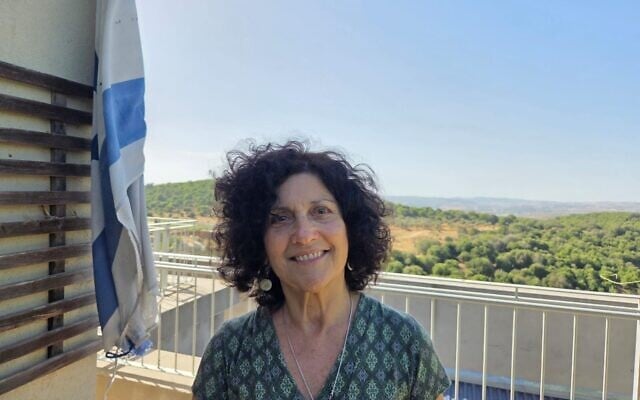


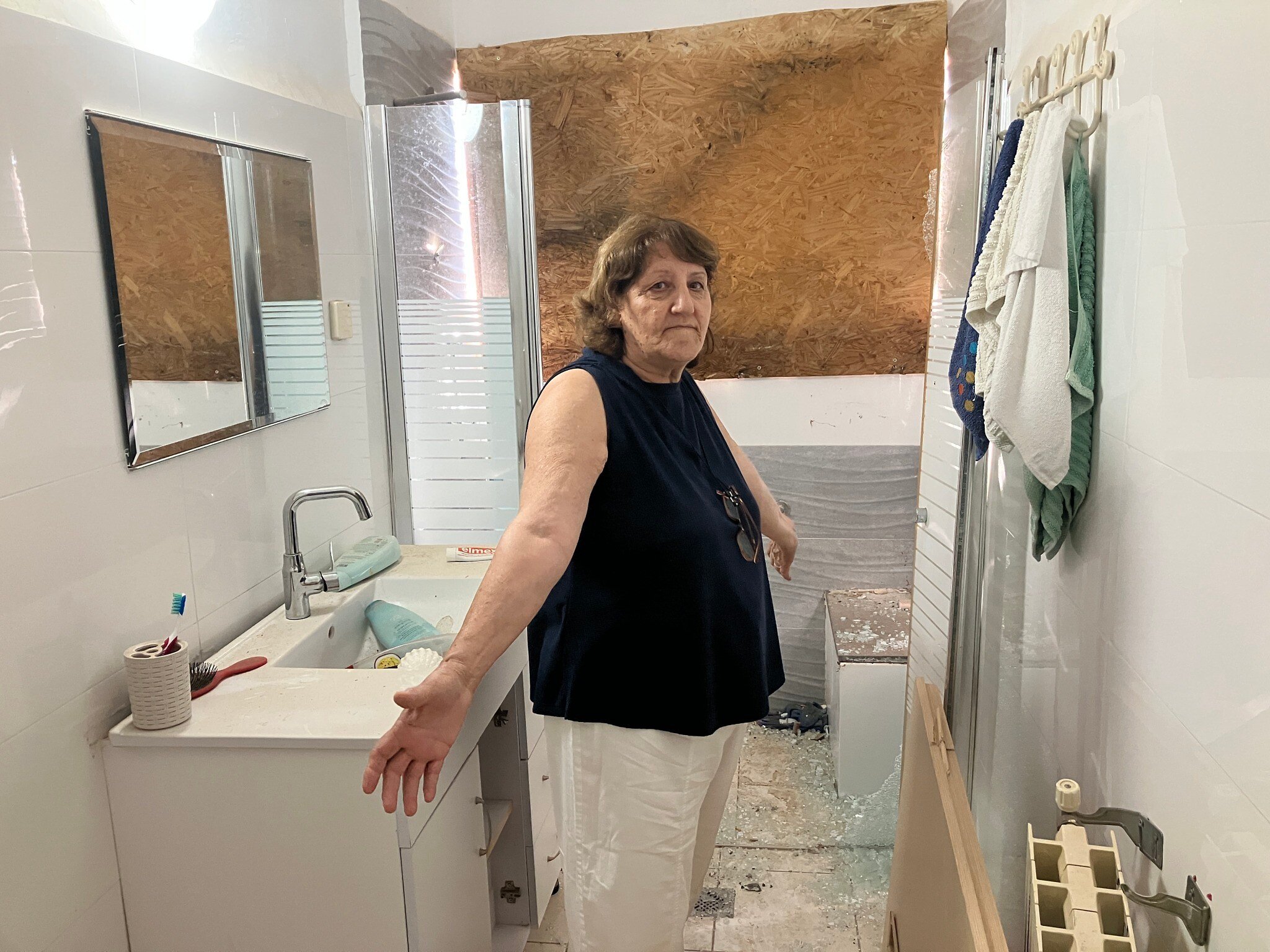
SHTULA – Shula Giladi, known as Shula from Shtula, used to welcome tourists into her northern Israel home with Kurdish delicacies and stories of her family’s life in Kurdistan a century ago.
Then the Lebanese terror group Hezbollah began firing anti-tank missiles, rockets and explosive drones across the border, damaging her home and hundreds of others’.
Now, the displaced 72-year-old jokes wryly that she is known as Shula with a suitcase.
Giladi’s house sits less than 500 meters (1640 feet) from the Lebanese border, which has remained quiet since late November, when a ceasefire was reached to end the Iran-backed group’s 13-month campaign of terror.
But six months after the fighting stopped, many, like Giladi, are still living with its effects, their homes still in disrepair and their communities scattered.
Sitting with The Times of Israel in her garden, once lush and verdant but now in ruins, the former host was unable to offer a glass of water or even the use of a bathroom.
Giladi hopes to move back once the repairs are finished, but she is now waiting for appraisers to submit reports and for the government to approve her expenses, with no idea how long the whole process will take.
“I’ve dropped the word ‘return’ from my lexicon,� said Giladi.
Her sense of displacement is echoed by many of the 60,000 residents of 32 communities in northern Israel, who have been homeless since being evacuated beginning on October 8, 2023, when Hezbollah and allied groups began firing into Israel in solidarity with Hamas and the war that the allied terror group had sparked in Gaza with its invasion of the south a day earlier.
The fighting in the north saw daily indiscriminate Hezbollah attacks on communities near the border, and occasionally further south, drawing Israeli reprisals. The simmering conflict broke open in late September as Israel decapitated the terror group’s leadership and launched a limited ground invasion into southern Lebanon amid intensified fire on the north. It came to an end with a temporary truce on November 27, 2024, followed in February by a permanent, albeit shaky, ceasefire agreement.
Over 13 months, the attacks claimed the lives of 46 civilians inside Israel and 83 Israeli soldiers, with hundreds more wounded. Homes, businesses, farms and infrastructure in dozens of northern towns suffered extensive damage, and a once-thriving tourist industry was left decimated.
About 61% of the evacuees have returned to their communities since fighting ended, according to the Alma Research and Education Center, an independent nonprofit specializing in security challenges on Israel’s northern border.
Some are staying away until the end of the school year, or have no homes to return to yet. In Shtula and nearby Kibbutz Sasa, many expressed a deep sense of uncertainty about whether the ceasefire with Hezbollah will hold.
In the six months since the ceasefire, Israel has carried out sporadic attacks on what it says are Hezbollah members in southern Lebanon, and has left troops at four key locations across the border in a bid to ensure the terror group does not rebuild a military foothold along the frontier. So far, Hezbollah, which is thought to have been significantly weakened by the war, has resisted responding.
“From 2022 until the summer of 2023, Hezbollah was 100 percent ready to invade northern Israel,” Lt. Col. (Ret.) Sarit Zehavi, the CEO and founder of the Alma Center, spoke at a conference in Kibbutz Lochamei HaGhettaot on May 21. “Right now is what I’d call the cease between fires. We can’t keep fooling ourselves after October 7.â€�
On October 7, 2023, thousands of Hamas-led terrorists invaded Israel, killed 1,200 people, and kidnapped 251 people into the Gaza Strip. The attack stands as a chilling, ominous reminder to northern residents of what could have befallen them if Hezbollah had implemented what Israel says were its own plans for a massive cross-border assault.
The western Galilee moshav of Shtula was founded in 1969 by a small group of families from Kurdistan and Iraq. The family of Giladi, who was 16 at the time, was among them.
Residents mostly supported themselves with small family farms. Giladi dreamed of opening a hospitality business, but worried about the community’s location on the northern border. “Who will come to Shtula to eat?” she recalled asking herself at the time.
Before the war, approximately 300 people called the moshav home. The community prided itself on its mix of religious, traditional, and “young folks with dogs and tattoos,” according to another Shtula resident, Hadas Lahav.
After the war ended, the roads damaged by tank treads were repaired. But there are still destroyed cars and mangled bus shelters that haven’t yet been removed. Many houses are pockmarked with shrapnel.
Giladi, a member of the temporary planning board of the moshav, said that 20% of residents had already moved back. She believes more will return in July, after the end of the school year.
Only some 2% said they do not plan to return. Still, the community hopes to expand its footprint, with 15 families expressing interest in moving there.
The community is also hoping that visitors will return.
Ohad Hatan, who owns the On the Border Cafe in the moshav, said he is finishing renovations and plans to re-open shortly, hoping that people will visit.
The cafe is located in a grove of trees next to what is known as the “Talking Walls” border, a concrete barrier erected to protect the town that was festooned in 2018 with murals by a number of international artists.
During the first part of Giladi’s evacuation, she stayed at her children’s houses and then at a hotel in Tel Aviv, where she ran a pop-up Kurdish food restaurant and did well.
“But a house is not only four walls, it’s also my history, my memories, my essence,” she said. As the war raged, she had “moments of crisis, but I know how to find happiness. My friends who had nothing to do except sit in the hotel lobby were broken.â€�
Speaking at the Alma Center conference, Dmitry Apartsev, Senior Director of Government Relations Department, Northern Reconstruction Headquarters, said that the government has allocated NIS 8 billion ($226,000,000) over four years to address the needs of the frontline communities in the north. The money is an opportunity to provide “broad and comprehensive solutions, not just localized or emergency responses.”
Giladi said she is optimistic but also pragmatic.
Walking her visitor out of her gate, she reached for a grape leaf hanging off a vine and nimbly folded it into an envelope, explaining how she used to stuff them to make kubbeh for guests visiting her home, something she won’t be able to do, at least for a while.
“This is a reality I can’t change,” she said.
Some 15 kilometers (nine miles) to the east, members of Kibbutz Sasa were chatting over food at long tables in the community’s communal dining room.
During the war, almost all the 450 members of the kibbutz were evacuated, but 90% of them have since returned.
Varda Yatom, 79, who has lived on the kibbutz since 1964, said that during the evacuation, “12 elderly kibbutz members died of broken hearts.”
“It was very hard for them to be away from the kibbutz,� Yatom said.
Surrounded by grapevines, apple orchards, and trees, Sasa sits about 3 kilometers (two miles) from the Lebanese border, a short distance that was seemingly enough to save it from the kind of extensive damage seen on Shtula.
The worst damage was suffered by a school auditorium that took a direct hit, with much of the rest of the town escaping unscathed.
Yatom said she wanted to believe that Hezbollah leaders decided not to destroy the kibbutz the way “Nazis preserved Paris, so they’d have somewhere to go for a holiday.�
The internationally acclaimed artist moved to Kibbutz Nachsholim during her evacuation, but was unable to find a place to make her art.
During the war, she sometimes returned under fire to her studio in the kibbutz.
“I didn’t feel fear,� Yatom said as she stood in her kibbutz gallery, where her sculptures are displayed. “I’d rather die with clay in my hand than not work on my art. A day without doing art is wasted.�
Another kibbutz member, Edna Angelica Calo Livne, 69, stayed on the kibbutz during the war to be with her husband, who is part of the kibbutz’s emergency response team.
Calo Livne, who moved from Italy to the kibbutz in 1975, is the founder of Beresheet LaShalom, a community theater group for Jews, Muslims, Druze, and Christians meant to foster dialogue through performing arts.
During the fighting, she traveled to Italy on several occasions to speak about her experiences. People there were surprised to hear that even during war, she still believed in peace, she said.
Many in the north remain circumspect that the calm will last. Next week will mark 43 years since Israel invaded Lebanon in an operation advertised as bringing peace to the Galilee, a promise belied by decades of skirmishes and now two major wars.
“Hezbollah has not given up its dream of destroying Israel,” Tal Beeri, the director of Alma’s Research Department, said at the May 21 conference. “The ideology of Hezbollah hasn’t changed.”
But Calo Livne remains undeterred.
“If we don’t believe in peace, we have no future,� she said. “Each day, we can discover how many resources, energy, and answers we have. Life always teaches us something new and unpredictable.�

